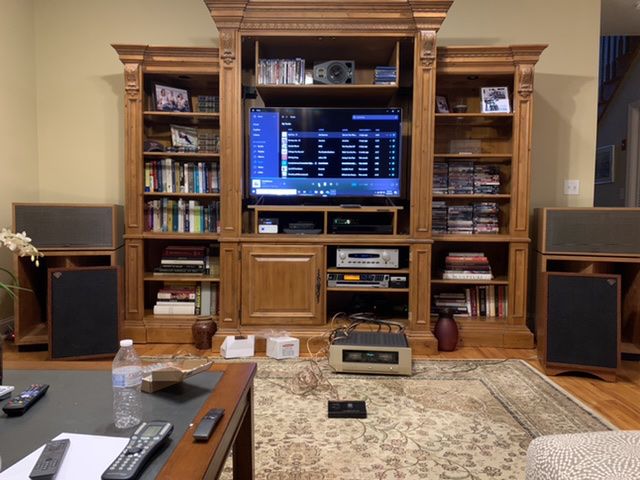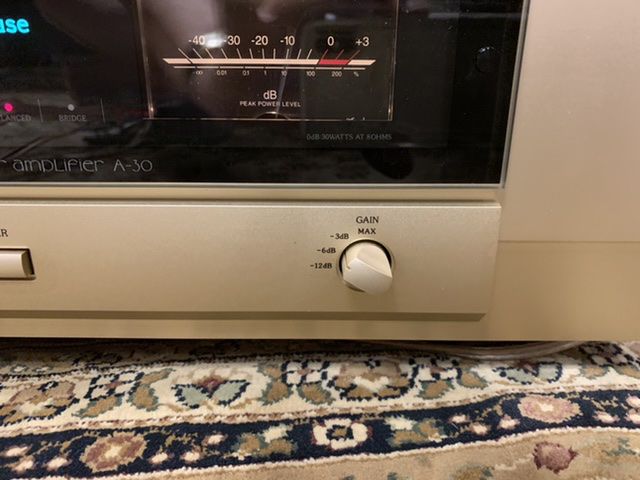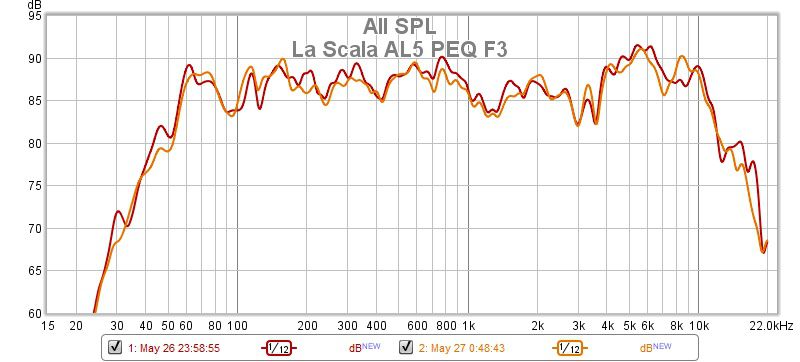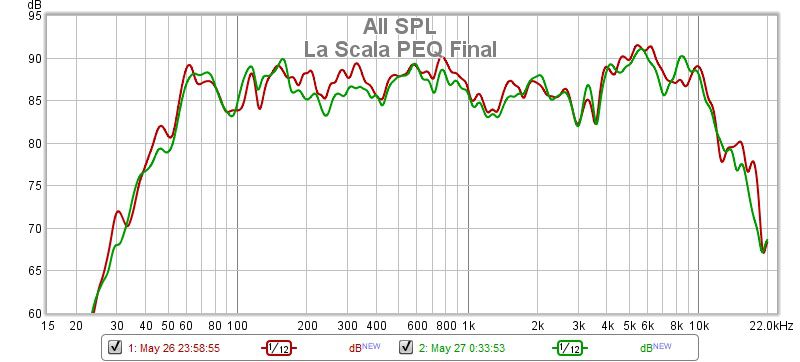
GlennyC
Regulars-
Posts
67 -
Joined
-
Last visited
Recent Profile Visitors
The recent visitors block is disabled and is not being shown to other users.
GlennyC's Achievements

Advanced Member (3/9)
54
Reputation
-
Heresy vs Other High End Heritage Klipsch
GlennyC replied to GlennyC's topic in General Klipsch Info
Yes. I was thinking that the larger sized Heritage speakers were only designed that way to reproduce a lower frequency bass signal, but I have come to realize from the responses to this post that the larger sized enclosure also allows for a larger midrange horn. I am luck because when I test the frequency response (Room EQ Wizard) of my set up with my Heresys and my powered sub I do get a nice flat curve above my ability hear on the high end and deep into the low end. And the result is very pleasing to me without the additional size, weight and expense. A hot rodded Chorus II set might be examined by me in the near future though just to see. -
Heresy vs Other High End Heritage Klipsch
GlennyC replied to GlennyC's topic in General Klipsch Info
It’s weird you say that. When I AB tested my Heresy IIIs against the La Scala AL5s, I had to up the gain via a control knob (on my Accuphase) for the Heresys to have an equal listening experience. The Heresys being less sensitive needed more power to have the same output as the La Scalas. When people test the higher sensitivity speakers they will be louder with the same input power. Does this trick some listeners I wonder? It is an old stereo salesperson trick to up the volume on the more expensive speakers they are trying to upsell to. This then makes the higher end speakers appear to sound better. 🤷♂️ -
Heresy vs Other High End Heritage Klipsch
GlennyC replied to GlennyC's topic in General Klipsch Info
Based on the feedback here I am shopping for Chorus IIs just to see what that project might cost. Maybe $1400 for original speakers plus rebuilt crossovers and drivers ($600?). Something to consider. I think Chorus IIs are about as big as the wife could handle (even though I pay all the bills I am considerate of WAF). -
Heresy vs Other High End Heritage Klipsch
GlennyC replied to GlennyC's topic in General Klipsch Info
So, while I did experience a sonic difference with the new La Scalas compared to the Heresy III setup I have, I did not think the marginal difference was worth the cost (over $13,000 for the AL5s) and huge size. But thank you for pointing out that it is not just the bass but the midrange that needs to be considered. I am wondering… is there a midrange driver upgrade to the Heresy III speakers that is lowish in cost and simple to accomplish? Would crossovers need to be upgraded too? Would be nice if dropping in new midrange drivers could solve this. -
Hello all. I have Heresy III speakers being driven by a B&K Reference 50 preamp and an Accuphase A30 amplifier. I also have a Sunfire True powered subwoofer with dual 12” woofers. This is not a question but a comment. I would like to see what people think. I have AB tested my set up against new La Scalas and find my Heresys to be quite satisfying. My premise is that all the additional size and expense of the large heritage speakers is to reproduce bass frequencies. I have great tweeters and midranges in my Heresys. Plus I have solved the low range frequency reproduction problems with an excellent powered subwoofer. There is no need for anything bigger main speaker wise at all. Save your money. I point to the new Jubilee as proof. They include dual 12” powered subwoofers. Save your money plus your wife/live in domestic partner will love you for not having to decorate around monsters.
-
I’ll get right on it!
-
HP EliteDesk 800 G2 PC running Tidal Master Quality Software -> Mytek USB Cable -> iFi iPurifier2 USB filter -> Mytek Liberty DAC -> TRS/XLR Cables -> B&K Refetence 50 Preamplifier (Direct Mode) -> XLR Cables -> Accuphase A-30 Amplifier -> 14 gauge speaker wire -> Klipsch La Scala AL5s (Note: I also have a Behringer DEQ2496 between the Preamp and Amp that I can turn off to make it just a pass through. In addition on the subwoofer out of my Preamp, I have a Klipsch R-112SW subwoofer)
-
Hate on me. Now that I’ve got my AL5s working properly, I ran an A/B test with a switch box to test for listening differences between the AL5s and my Heresy IIIs. The AL5s are more efficient than the Heresy IIIs therefore the AL5s are louder when switching to them. However, luckily I have a gain switch on my amplifier that will boost output in 6 dB increments. So, when I switch to the Heresy IIIs, I also bump the amplifier output by 6 dB. Switch to the AL5s, drop the amp by 6 dB. This gives a great comparison. Results... man for the extra $13,000 the differences are minimal. (I have a powered subwoofer to augment the low end and can’t hear above 10,000 Hz) I have to believe the differences between a La Scala II and a La Scala AL5 are even much more so minimal (to me). La Scala II is $5000 used. I paid $13,000 with tax for the AL5s. I have time to return the AL5s still. Decision to follow.
-
This is the same graph as above with 1/3 smoothing instead of 1/12. I can see why Chris A recommends 1/6 or finer. 1/3 hides a lot of warts. Thanks to all for the great guidance. I am happy I was able to absorb a portion of it because I will be able to enhance my listening experience substantially now. Plus I was able to fix my tweeter based on the guidance. Great people on this forum!!!
-
-
Why not PEQ at two different frequencies for an even better match between the speakers? Right channel PEQ at 90 Hz +2.5 and at 160 Hz -4.5. Both Left and Right channels on one graph. DEQ2496 magic!!
-
-
-
So, I just remeasured after checking all my connections and being meticulous about positioning the microphone in the same relative position in front of each speaker. New results look much better as far as differences between speakers goes. Positioned the microphone 16 inches in front of each speaker. I still have that Right channel peak at 160 Hz. But I will be able to PEQ that out of there. Will try that now.
-
So I opened up my La Scala after getting to OK from tech support at Klipsch. Wire was loose to the tweeter. Easy peasy fix. Ten minutes at most. I ran the REW measurements as follows.... Red line is Right speaker. Green line is Left speaker.
















